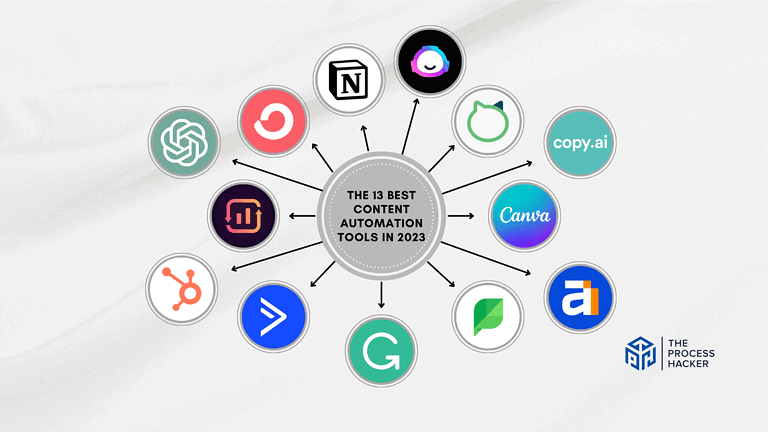The 28 Most Common Challenges Faced By Small Businesses
Starting an online business presents an opportunity for eager entrepreneurs to be their own bosses. Simply put, it can be a dream come true for many, should they do it right.
However, the allure of online businesses is the flexibility to work from anywhere and the potential for unlimited income.
With that said, building a successful online business is not as easy as many make it out to be. Many challenges can make small businesses fail on the road to success.
This article discusses the most common challenges every small business faces so that eager entrepreneurs will know what they’re getting into.
Why Should Many Small Business Owners Tackle These Challenges?
Small business owners like you face an array of challenges that impede your growth and operational efficiency. Addressing these issues not only strengthens your company’s foundation but also enhances your competitive edge in a rapidly evolving market.
Let’s delve into the key challenges across various departments—marketing, sales, operations, finances, human resources, and leadership—providing you with actionable insights to navigate these hurdles effectively.
Marketing
Let’s face it, marketing can feel like an uphill battle for small businesses. You’re competing against larger companies with deeper pockets and established brands.
But here’s the good news: smart marketing doesn’t have to cost a fortune. It’s about finding the right tools and strategies for your unique business.
#1) Generate Traffic, Especially Qualified Leads
Generating website traffic is crucial for any online business. For example, organic social media marketing allows you to connect with potential customers through platforms like Facebook, Instagram, and Twitter. Also, optimizing your SEO using SurferSEO can help you rank higher in search engines and increase traffic.
On the other hand, paid advertising allows you to target specific audiences and can be highly effective in generating qualified leads. However, to maximize your ROI, paid advertising requires capital, planning, and effective marketing.
#2) Build A Strong Brand Identity
Building a successful brand requires having a solid identity that resonates with your target audience. Your brand represents your values, mission, and personality, helping you stand out and build a loyal customer base.
Define your brand identity in Canva with visual elements like a logo and color palette, as well as your name and tone of voice. Then, establish this identity across all marketing channels for maximum impact.
#3) Stay on Top of Digital Marketing Trends
Digital marketing isn’t what it was five years ago – or even last year, for that matter! The landscape shifts constantly, and it’s easy to feel overwhelmed trying to keep up. New platforms emerge, algorithms change, and what worked wonders yesterday might fall flat today.
The good news is that you just need the right digital marketing tools, like Google Analytics, Hootsuite, and ConvertKit. These platforms offer ways to track and analyze your efforts, schedule and automate posts, and send targeted emails to your audience.
#4) Manage Marketing Spend
Let’s be honest: Marketing budgets can be tight for small businesses. It’s a constant balancing act to get the most bang for your buck. It’s easy to overspend on marketing campaigns that don’t deliver or miss out on opportunities because you didn’t allocate enough resources.
The good news is that there are tools designed to help you control your marketing spend. These platforms, like Google AdWords and Meta Ads, offer features like budget tracking, ROI analysis, and performance reporting, helping you make smarter decisions and optimize your ad budget.
Sales
Boosting sales is a common challenge for small businesses. Identifying your target audience, standing out from competitors, and converting leads into customers are crucial hurdles. Addressing these areas strategically is essential for improving your sales performance and driving your business forward.
#5) Convert Leads Into Customers
Once leads start coming to your website and social media, the next challenge is converting those visitors into customers. That’s because conversions are the lifeblood of any online business; without them, you won’t be able to generate revenue.
To improve conversion rates, focus on enhancing the user experience on your website. Make it easy to navigate, visually appealing, and clearly highlight the value of your offerings. Use clear calls to action (CTAs) and build trust through customer reviews and a secure checkout process.
#6) Develop the Right Sales Strategy
Crafting the right sales strategy involves understanding what truly resonates with your customers and how to effectively communicate your value proposition. Start by clearly defining your unique selling points to meet the needs of your target audience.
Engage and build trust with your old and new customers and gather feedback to continuously refine your approach. Remember, a flexible strategy that adapts to customer feedback and market changes significantly enhances your sales outcomes.
#7) Keep Up with Your Competition
The cutthroat world of sales can leave you feeling like you’re in a never-ending footrace. Thus, to keep pace with your competitors, you need a sales strategy that’s as dynamic as the market.
Let’s face it: outdated tactics won’t cut it anymore. To truly excel, you need to understand your competitors’ strengths, weaknesses, and unique differentiators. With this knowledge, you can tailor your sales approach to highlight your unique value proposition and leave competitors in the dust.
#8) Accurately Forecast Sales and Adapt
Accurately forecasting sales involves analyzing past sales data, market trends, and economic indicators to predict future sales volumes. You need to be proactive in reading these patterns and preparing for fluctuations.
Adaptability is key. When your forecasts show a dip or spike, having a flexible strategy allows you to respond effectively. This might mean adjusting your inventory, scaling marketing efforts, or revising pricing structures to better align with current demand.
Operations
Efficient operations are the backbone of any successful small business. As you strive to grow, you’ll encounter several challenges that can impact your operational efficiency and productivity. Addressing these challenges head-on with smart strategies and the right tools can significantly enhance your business performance.
#9) Streamline Processes to Improve Productivity
To boost productivity, streamline your operational processes by eliminating redundancies and automating routine tasks. This could involve using software to manage inventory more effectively or adopting project management tools to keep your team on track.
Simplifying these processes not only saves time but also reduces the likelihood of errors, making your business run more smoothly. It also frees up your time to focus on other important tasks, such as expanding your business or developing new products and services.
#10) Implement the Right Technology Solutions
Adopting the right technology is crucial for enhancing your operational efficiency. Evaluate tools that align with your business needs—whether it’s for accounting (Quickbooks), customer relationship management (Attio), project management (Notion), or automation (Zapier). The right technology not only automates tasks but also provides valuable insights to drive decisions.
#11) Ensure Product Quality and Customer Satisfaction
Maintaining high product quality and ensuring customer satisfaction are essential. For customer issues or supply chain disruptions, you should regularly implement quality control checks and gather feedback to ensure existing customers are happy.
Ensuring quality enhances your offers and could result in satisfied customers and a strong reputation for your brand. To promptly address any issues, you can use a customer chatbot (Intercom) or ticketing system (Zendesk).
#12) Provide Responsive Customer Support
Responsive customer support can make a significant difference in customer retention and satisfaction. Ensure your customer support team is well-trained and equipped with the necessary tools to handle inquiries and resolve issues promptly.
I like using Notion to build a customer knowledge base and Loom for personalized video replies to customer inquiries. A swift and effective response system is critical to solving problems and enhancing customer trust.
#13) Collect and Incorporate Customer Feedback
Customer feedback is invaluable for continuous improvement. This insight allows you to make positive adjustments to your products, services, and overall customer experience, keeping your business plan aligned with customer needs.
You can regularly collect and analyze feedback through surveys, social media, and direct communication. I like using Google Forms or Typeform to create interactive surveys and Buffer to monitor social media mentions.
#14) Retain Customers and Foster Loyalty
Retaining customers and fostering loyalty involves more than just meeting their needs; it requires exceeding their expectations. Implement loyalty programs, provide exclusive offers, and engage with your customers through personalized communication.
These strategies not only encourage repeat business but also turn your customers into advocates for your brand. By keeping your own business plan aligned with customer needs, you can ensure their satisfaction and create a strong, loyal customer base.
Finance
Small business owners find the financial tightrope walk. Let’s tackle some of the biggest financial hurdles you might encounter and how to overcome them.
#15 Make a Profit so You Are a Business
This might seem obvious, but it’s a real struggle for many business owners. Turning a profit isn’t just about having more money coming in than going out.
It’s about smart pricing, understanding your costs, and consistent revenue generation. If you’re not making a profit, you’re not a business yet—you’re just a hobby.
#16) Manage Cash Flow to Cover Expenses
Cash flow will be a problem in the early stages. Entrepreneurs must prepare to be able to cover expenses out of pocket or get funding, but they also must learn to manage their cash flow once sales eventually rack up.
To manage your cash flow, you must clearly understand the money flowing in and out of your business. This includes tracking expenses, invoicing customers promptly, and negotiating favorable payment terms with suppliers.
You should also have a cash reserve to cover unexpected expenses or revenue dips. You can do this by setting aside a portion of your monthly revenue in a separate savings account.
#17) Have a Business Budget
It’s not the most exciting part of running a business, but it’s absolutely essential. A solid budget keeps track of your income and expenses, helps you forecast future needs, and identifies areas where you might be overspending.
Without a budget, it’s easy to lose control of your finances. You might spend more money than you’re bringing in, which will leave you struggling to make ends meet. Or, you might overlook important expenses and find yourself with unexpected bills that you can’t pay.
#18) Comply with Taxes
Tax season can be a nightmare for any business owner, but it’s incredibly daunting for small businesses with limited resources. Keeping meticulous records and understanding your tax obligations are crucial to avoid penalties and ensure compliance.
Don’t be afraid to seek professional help if needed—it can save you a lot of headaches down the road. For example, you should get a bookkeeper to categorize your expenses and income and an accountant to help you file accurate tax returns.
#19) Get Funding if You Need It
Whether you’re just starting out or looking to expand, securing funding can be a significant challenge. Many options are available, from traditional bank loans to crowdfunding, but each has its own set of requirements and risks.
But it’s important to explore all your options and find the one that best suits your business needs and goals. Remember, seeking funding is not a sign of weakness but a strategic move to help your business grow and thrive.
Human Resources (HR)
While your product or service is the heart of your business, the people behind it are equally important. Let’s explore some common HR challenges established businesses face and how to address them effectively.
#20) Recruit Good Employees
Finding the right talent can feel like searching for a needle in a haystack. You need individuals who not only possess the necessary skills but also align with your company culture.
Thus, to attract top-notch candidates, you need to build a compelling employer brand, use effective recruitment channels, and have a solid hiring process. Additionally, consider offering competitive pay and benefits to stand out from others.
#21) Retain Hardworking Employees
Once you’ve found the right people, keeping them engaged and motivated becomes a priority. High turnover rates can be costly and disruptive to your business.
Thus, to keep your employees happy and loyal, it is important to create a positive work environment and offer competitive compensation and benefits. Encourage open communication and provide opportunities for growth and development.
#22) Develop Talent and Training
Investing in your employees’ growth is an investment in your business’s future. Regular training and development programs ensure your team has the necessary skills to perform their jobs effectively and become more productive.
Further, investing in your team’s development shows that you value their contributions and are committed to helping them succeed. This can lead to increased job satisfaction and loyalty towards your company.
Leadership
Leading as a small business owner isn’t just about managing day-to-day operations. It’s about setting a course, inspiring your team, and making tough decisions. Let’s explore some key leadership challenges and how to overcome them.
#23) Develop a Vision and Align Everyone to It
A clear vision provides direction and purpose for your business. It’s your North Star, guiding every decision you make.
However, a vision is only effective if everyone on your team understands and embraces it. Thus, you should communicate your vision clearly, ensuring it resonates with your employees and aligning their efforts to achieve it.
#24) Navigate Change
Change is inevitable in the business world. Whether it’s adapting to new market trends, embracing technological advancements, or responding to unexpected crises, your ability to navigate change is crucial.
Thus, you need to be agile, proactive, and decisive while keeping your team informed and motivated throughout the process. This requires effective communication, strategic planning, and a willingness to embrace innovation.
#25) Build Trust and a Positive Culture
A positive company culture fosters collaboration, innovation, and employee satisfaction. It starts with building trust and open communication among team members.
As a leader, it’s your responsibility to set the tone, encourage transparency, and create a culture where everyone feels valued and heard. This not only boosts employee morale but also leads to increased productivity and a stronger sense of loyalty towards the company.
#26) Master Decision-Making
Decision-making is a daily part of running a business. Some decisions are small and easy, while others can significantly impact your company’s future.
Thus, it is important to gather relevant information, weigh your options carefully, and trust your instincts. Remember, even the best business leaders make mistakes, but the key is to learn from them and move forward.
#27) Resolve Conflict and Issues
Conflict is natural in any workplace. However, unresolved conflict can decrease productivity, low morale, and even employee turnover.
Thus, it’s important to address conflict promptly and fairly, encourage open communication, and find mutually agreeable solutions. Remember, conflict resolution is not about winning or losing but finding common ground and moving forward together.
#28) Network Like a Boss
Not focusing on networking is a critical mistake to avoid when starting an online business or a small business of any kind. But why is networking so crucial for success?
Networking is the practice of meeting like-minded individuals relevant to your industry. It allows you to discover and turn unique business opportunities into something special. Through networking, you can also discover business partners and even potential customers.
Final Thoughts on Small Business Challenges
Being one of the many business owners is a rewarding but demanding journey. It’s a balancing act of managing finances, nurturing your team, staying ahead of the curve, and navigating the ever-changing business landscape.
While the challenges that small business owners face will seem daunting at times, remember that every hurdle is an opportunity for business growth and learning. By understanding the common pitfalls and taking the right action, you can overcome these challenges and become successful!
Don’t be afraid to seek help when needed. There are many resources available to many small business owners, from mentors and advisors to online communities and workshops. By leveraging these resources and learning from others’ experiences, you can gain valuable insights and avoid costly mistakes.
Remember, the journey of a thousand miles to business success begins with a single step. Start by identifying your business’s most pressing challenges and taking proactive steps to address them. With perseverance, determination, and a willingness to adapt, you can turn challenges into stepping stones and achieve your entrepreneurial dreams.
The path to success may not always be smooth, but with the right mindset and marketing strategies, you can overcome any obstacle and build a thriving business.







